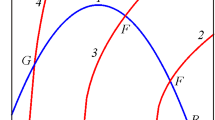Abstract
The existence of a hierarchy of structural levels of plastic deformation can be considered to be an experimentally and theoretically proven fact [1–3]. Mescheryakov [1] showed that a noncrytallographic level of deformation arises in elastoplastic waves, manifesting itself as macrofluxes of particles of the medium; the velocity of the particles relative to each other at velocity has dispersion and the particles move in the direction of the wave propagation. Displacement of macrofragments of the crystal, which is also a manifestation of noncrystallographic structural levels of deformation, has been detected in highly excited systems [2]. The relaxation approach used increasingly to describe plastic deformation assumes that defects are created, move, and are restructured during deformation in a way so that the level of stresses inside the material drops. The nonuniformity of the stress field gives rise to nonuniform plastic deformation and local shears and rotations at points of stress concentration. These concepts make it possible to use the principles of synergetics to build specific theoretical models and to consider loaded material as a nonequilibrum dissipative structure [3]. To date, however, the construction of the theory describing multilevel plastic deformation processes has not been completed. In particular, it is not yet known what levels are added, depending on the rate and duration of the loading and on how the levels are linked.
Similar content being viewed by others
Literature cited
Yu. I. Meshcheryakov, Poverkhnost', No. 3, 101 (1988).
V. E. Panin and T. F. Elsukova, Synergetics and Fatigue Fracture of Metals [in Russian], Nauka, Moscow (1989), p. 113.
V. E. Panin, V. A. Likhachev, and Yu. V. Grinyaev, Structural Levels of Deformation of Solids [in Russian], Nauka, Novosibirsk (1989).
N. A. Koneva and É. V. Kozlov, Izv. Vyssh. Uchebn. Zaved., Fiz., No. 2, 89 (1990).
A. L. Gaikov and E. I. Prokuratova, Metallofizika, No. 1, 71 (1990).
Yu. I. Meshcheryakov, Probl. Prochn., No. 7, 50 (1983).
J. J. Gilman, Mechanics [collection of Russian translations], No. 2 (1970).
S. A. Atroshenko, S. A. Gladyshev, and Yu. I. Meshcheryakov, Proceedings of 4th All-Union Conference on Detonation, Vol. 2 [in Russian], Telavi (1989), p. 196.
Additional information
St. Petersburg Branch of the A. A. Blagonravov Institute of Mechanical Engineering. Translated from Izvestiya Vysshikh Uchebnykh Zavedenii, Fizika, No. 10, pp. 7–12, October, 1992.
Rights and permissions
About this article
Cite this article
Prokuratova, E.I., Rogozhin, V.V. Evolution of substructures under microlevel and mesolevel plastic deformation. Russ Phys J 35, 902–906 (1992). https://doi.org/10.1007/BF00559880
Received:
Issue Date:
DOI: https://doi.org/10.1007/BF00559880




